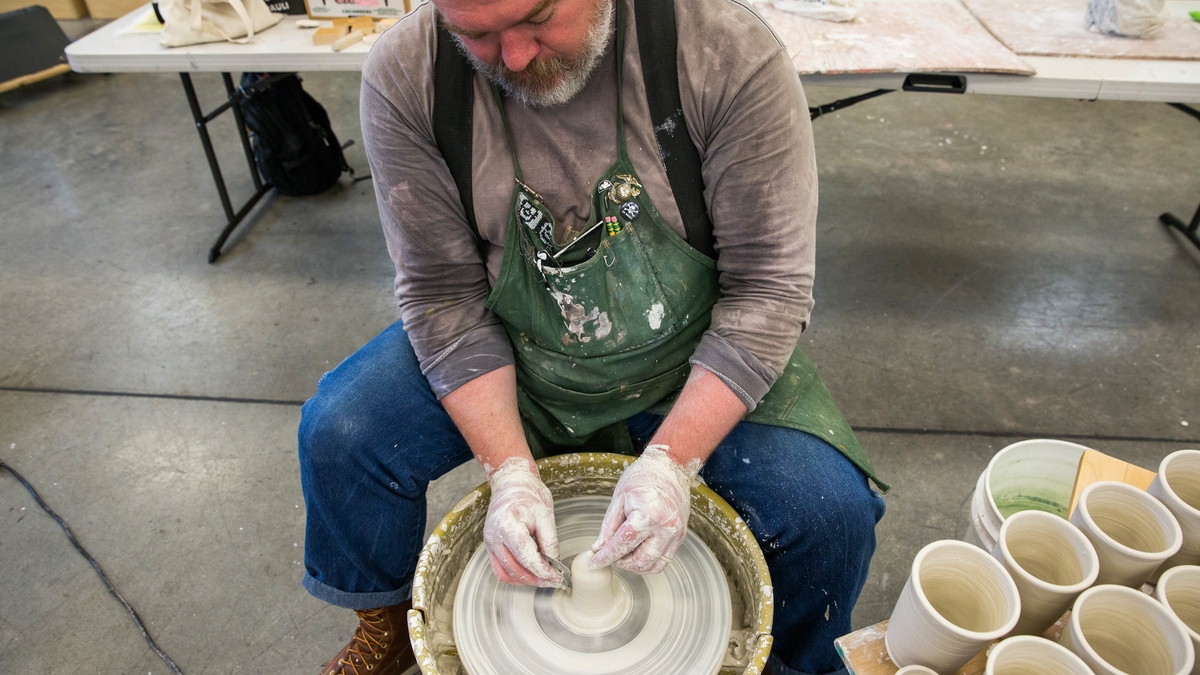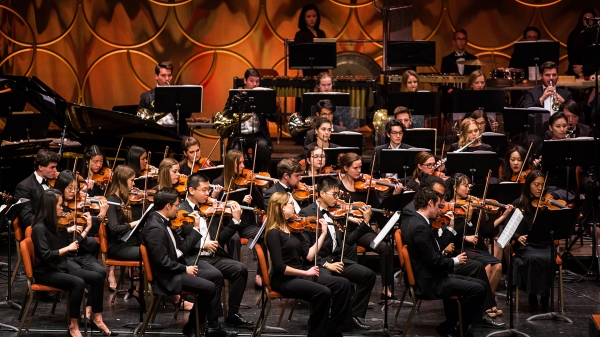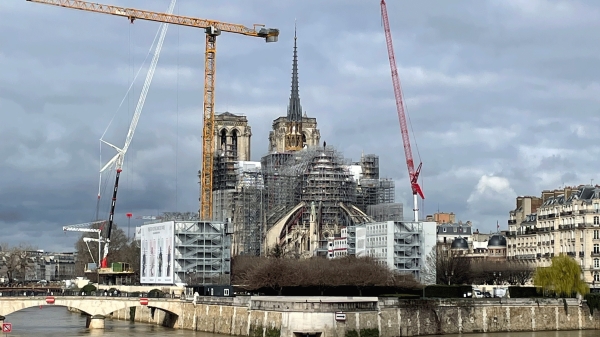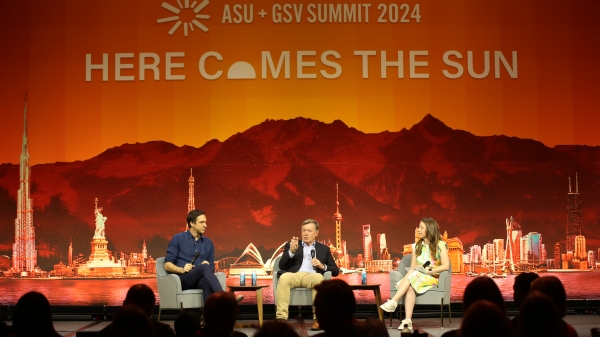Vet uses ceramic art to reflect on war

Visiting artist Ehren Tool shapes the final small ceramic cup out of a block of clay at the Arizona Artists Guild in North Phoenix on Wednesday morning on Sept. 8, 2015. The ceramic artist is featured in a show that will have an opening evening on Sept. 11 at the ASU Art Museum Brickyard in downtown Tempe.
“They’re just cups,” he says. “Just cups.”
He goes on to say that they’re not that special, and that they shouldn’t be considered fine works of art. But Ehren Tool knows better than that.
Deep down, the ceramic artist from Berkeley, California, knows they’re an invitation to a conversation about the unspeakable and irreversible effects of war.
“My wife calls my work, ‘War Awareness Art,’ and it’s not necessarily for or against war but you’d better be aware of its long-term impacts,” Tool said on Thursday as he spun a potter’s wheel in front of a group of veterans and the general public.
“I don’t question my service. I still love the Marine Corps. It’s just that there’s a gap between the stated goal and the outcome. Rhetoric breaks down real quick after you’re in the battlefield or in the zone, and rounds are going both ways.”
Tool promises there will be no rhetoric at the exhibition, “Statement Piece: Erik Gronborg and Ehren Tool,” which opened in August and will run until Nov. 21 at ASU’s Art Museum Brickyard, located at 7th Street and Mill Avenue in downtown Tempe.
A free and open reception for the exhibition will be held from 6:30 to 8:30 p.m., Friday, when Tool will make cups in the museum’s gallery and give them away.
Over the past decade, Tool has given away more than 14,000 of his handmade cups. He does this as a statement against the large cost of war.
The exhibition features some of his cups, but it also brings together two socially engaged artists from different generations.
Denmark-born Gronborg, who will not be present for the opening reception, spent several years in a work camp for conscientious objectors before moving to the United States, where he made his mark with a series of functional pots addressing the Vietnam War.
Tool joined the Marine Corps in 1989 and served in Operation Desert Storm as part of the Military Police. Upon his return, Tool began to study ceramics, using functional pottery as a way to explore his revolving views about military service and the human toll inflicted by warfare.
“Gronborg and Tool have been paired for this exhibition because of similarities in their work and parallels in their personal histories,” said Garth Johnson, ASU Art Museum’s curator of ceramics. “Both artists harness the power of images pressed into wet clay. Both create approachable, functional pottery with social content built in that causes the person using the artwork to contemplate their own relationship with the U.S. Military.
Tool says he’s had a lot of time to contemplate his reasons for joining the marines — he thought it would make him a man. But he says his gung-ho attitude going into the service was quickly blunted by the horrors of war.
“When I told my grandfather that I was going to join the Marine Corps, he laughed and then said, ‘They’re going to steal your soul,’ ’’ Tool said. “It wasn’t the Kodak moment I was looking for.”
The picturesque moments Tool experienced were mostly grisly and cynical, which are stamped and emblazoned on the side of his cups. They feature skeletons, bullets, bomber planes, flowers, dollar bills, war medals and the occasional quote – “It’s just business” or “Worst religion ever.”
The exhibition also features 393 broken cups, which Tool created and glazed, and then shot at close range with a pistol. The broken cups, he says, represent the number of U.S. combat casualties at the end of the second Gulf War.
“Each one of those cups had the potential to live 500,000 to a million years, but a little piece of lead found them,” Tool said. “Those soldiers could have gone on to have kids and grandkids, or they could have been engineers, doctors, lawyers or could have gone on to do great things.”
“I think peace is the only adequate war memorial.”
For more information about “Statement Piece,” call 480-965-2787 or visit asuartmuseum.asu.edu.
More Arts, humanities and education

ASU Symphony Orchestra welcomes visionary conductor Jonathan Taylor Rush
Guest conductor Jonathan Taylor Rush will join Arizona State University’s Jason Caslor, director of bands, to lead the ASU…

Chemistry classes are key to art student's success
Amanda Barnette has a passion for art preservation. That means that, for the past four years, the Arizona State University…

ASU+GSV Summit tackles big questions about AI, technology, education
Editor's note: We'll be updating this story daily throughout the summit. The annual ASU+GSV Summit kicked off in San Diego on…